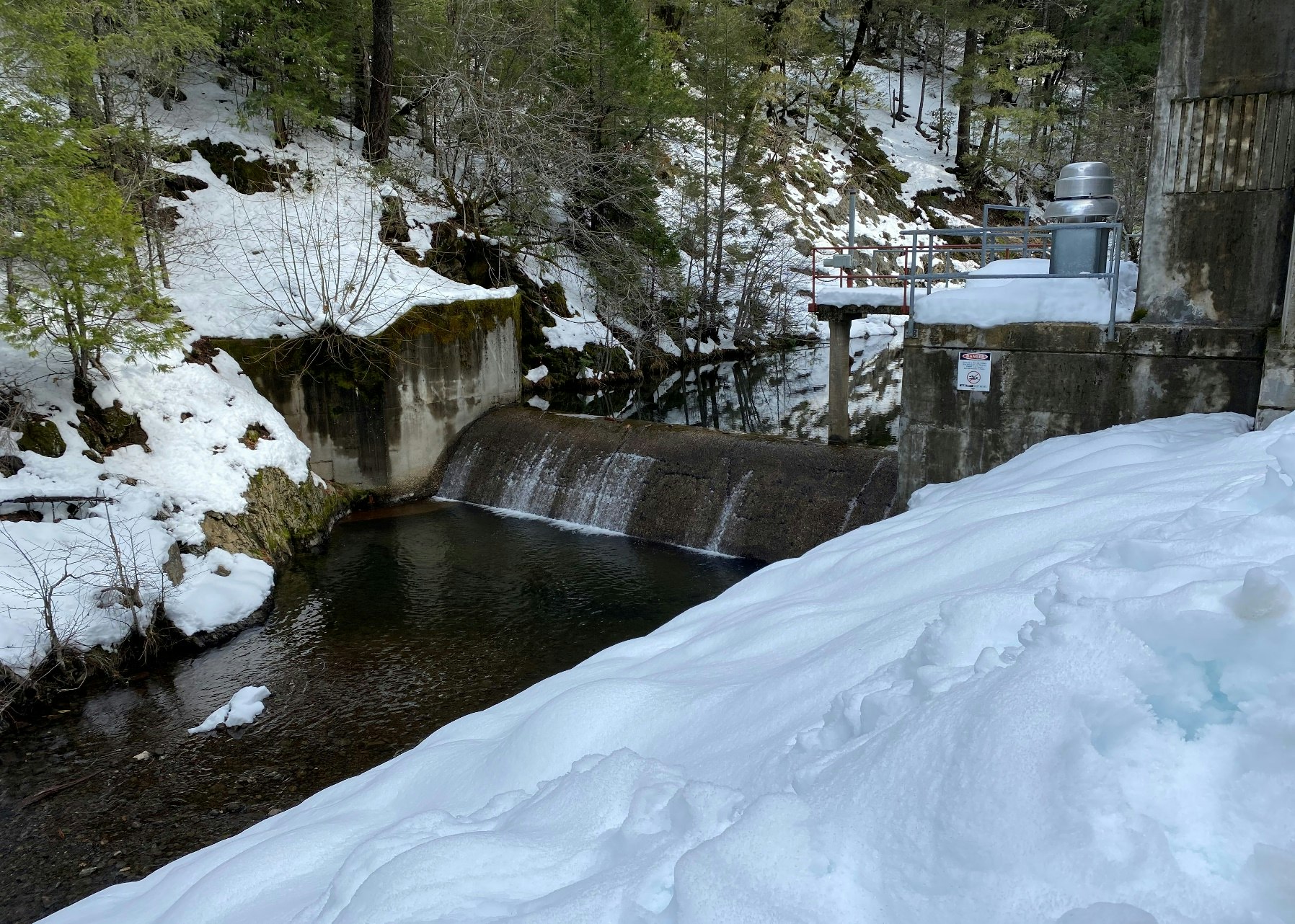How NID Delivers Irrigation and Treated Water from Source Watersheds to Consumers

Water is vital on so many levels. We need water for drinking, for growing, for cleaning. And, if you're a farmer, you need even more water. Roughly eighty-five to ninety percent of all water NID delivers is for irrigation use. Understanding how the water in our ecosystem travels from the mountains to your faucet or sprinkler system is an essential part of our Plan for Water. Educating the community is one of the first steps we take to encourage involvement in the process.
NID's four main water sources are natural snowmelt and the resulting runoff, reservoir storage carryover (any unused water from the previous year), contract water purchases, and recycled water released by treatment plants and later diverted to our irrigation canals. From watersheds to reservoirs to hydropower facilities, it's pretty fascinating how the water Mother Nature provides ends up in your home.
Watershed and Reservoirs
A watershed, also sometimes referred to as a drainage basin, is an area of land that drains streams and rainfall to a common outlet. For example, it might be a reservoir, a point along a stream, or a mouth of a bay.
The NID watershed is:
- 70,000 acres in high elevation near the headwaters of Yuba River, Bear River, and Deer Creek
- Nine storage reservoirs
- Just over 24 miles of canal, flume, and tunnel
- 19 campgrounds as well as dispersed camping
- Roughly 300,000 visitors a year
- Owned and managed through a patchwork of federal, state agencies as well as private organizations
Due to our warming climate and more frequently burned landscape, functional watersheds are critical to our water resources. One example of this is mountain meadow health. Because of their connection to the overall quantity and quality of water in our headwater systems, mountain meadow health is a priority in the Sierra Nevada. If we can improve the functionality of areas such as English Meadow, it will allow more water and sediment to remain within the aquifer and floodplain. Otherwise, it gets carried downstream in the spring during peak flow periods.
One of the most significant threats to the long-term functionality of our watershed is wildfire. Hazard tree removal and forest community health are a couple of areas we work on to protect the watershed from wildfire. The NID partners with organizations such as CalFire, Sierra Nevada Conservancy, and the US Forest Service to reduce the density of the forested area on and around the land.
Habitat restoration is also vital in protecting our watershed. And not only is it helpful for our water supply, but it's also good for nature. Residents and fishermen in Placer County saw this for themselves back in 2010 when for the first time in years, 30 Chinook salmon were found in the Auburn Ravine Creek in Lincoln.
The NID had made several minor modifications to the downstream irrigation water diversion points in Placer county, allowing the salmon to migrate from the Central Valley to Lincoln. Fast forward another three years (and after a lot of hard work), the first full fall migration season found 279 salmon. A healthy watershed is vital for our water supply and the land and animals around us.
Hydropower Facilities
Our watershed also provides electricity for homes through NID's hydropower facilities. This is a clean, renewable energy source. Unlike fossil fuels, it does not pollute the air. One of the significant benefits of the hydropower facilities for customers is that they contribute millions of dollars in revenue, which helps offset water rates.
NID owns and operates seven hydropower plants in our watershed. They generate enough electricity to supply the District's energy needs, plus about an additional 60,000 homes. Combined, they produce just over 82 megawatts. Some of the electricity produced by these hydropower plants is sold to the Northern California Power Agency and the Pacific Gas & Electric Company. There are 13 of our reservoirs and nearly 21 miles of pipes, tunnels, flumes, and open ditch canals within these hydropower facilities.
Transporting Water to Your Home or Farm
The water in our reservoirs then moves through a treatment plant and hundreds of miles of pipe and canal to either end up in your home or as irrigation water for farms. The water distribution service area includes:
- 287,000 acres of land
- Over 500 miles of canal
- More than 6,000raw water customers
- Eight water treatment plants
- More than 400 miles of treated water pipes
By the end of the year, that's three billion gallons of treated water. It's the water you drink and the water used to farm over 30,000 acres of land.
Most NID agricultural customers purchase water seasonally, from mid-April through mid-October. Those customers are usually growing more than one crop. Many grow wine grapes, apples, rice, and citrus, to name a few.
It's Your Water
We hope that now that you know a little more about how NID gets water to your home or farm, you'll join us in creating a Plan for the Water that can guide us for the next 50 years or more. Together, we can make a plan that will align resource decision-making with community values and District operational needs.
We will review NID's available water supply and how varying water demands impact long-term planning during this process. Our goal is to ensure the community enjoys the same high-quality water and reliable deliverability that it has now.
We invite NID customers to participate in workshops to share ideas and address questions and concerns. Together we can Plan for Water.
